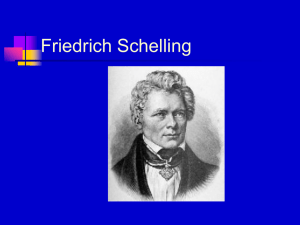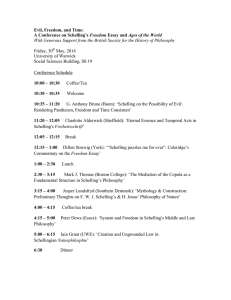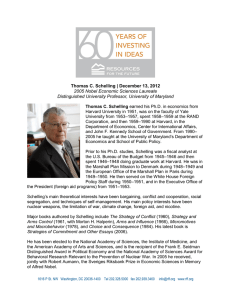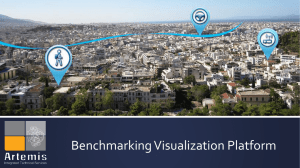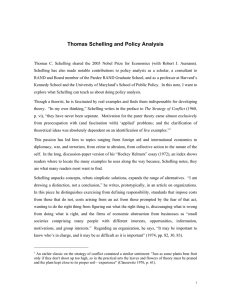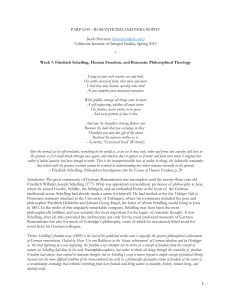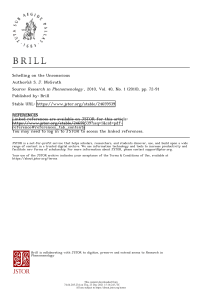Document 13409078
advertisement
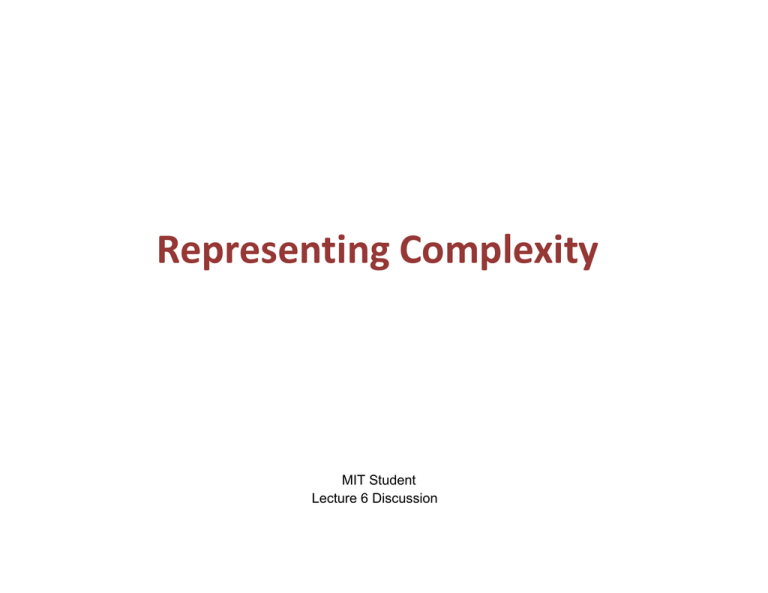
Representing Complexity � MIT Student Lecture 6 Discussion Dynamic Models of Segregation • Examine how individual incentives/actions aggregate to cause segregation • Develop set of rules governing individual preference/ tolerance and movement • Many simplifying assumptions • Representing the complexity of social segregation • Spatial Proximity Model • Bounded­Neighborhood Model • Presents Aggregated Results • Implicit policy recommendation (?) • Tipping Back to ESD: Society is the complex system with segregation as an emergent property. This dynamic model draws a clear system boundary between individual incentives and economic/organizational motivations Slide 2 Interactive Visualizations of Small World Graphs • Small world graphs & network questions • Small world: path length small compared to number of nodes, high degree of clustering • Key questions: Clustering? Relationships between clusters? • Challenges to representing complexity • Force­directed algorithm (explicit clustering) • Visual clustering • Proposed Modifications • Adopt modified FDA • Adopt visual clustering • Combine two methods of abstraction Back to ESD: By developing an effective visualization of a complex system, it is possible to identify previously unrealized emergent system properties. Slide 3 200 Years, 200 Countries, 4 Minutes • Represent development through wealth and health • Income/person on the x­axis, life­expectancy on the y­axis • Bubbles to represent countries, sized by population • Trend through time • Conclusions from visualization • Overall global development • Relationships between countries • Trend into the future (?) Back to ESD: Human civilization as the complex system and development as the emergent property that can be observed through a highly simplified visualization. Slide 4 Synthesis • Uniting Theme: Complexity can be represented through simplified models and visualization tools • Schelling: “Some of the results are going to be judged impressionistically, and it is worthwhile to get some idea of the kind of picture or pattern that emerges from a random distribution” (156) • Van Ham, van Wijk: ““Providing both detailed information as well as a global context in one image is one of the fundamental problems in Information Visualization” (5) Visualization” • Question Theme 1: When/where/how are the methods presented useful? • Question Theme 2: How can/should complexity be simplified? Slide 5 • Question 1: How can the visualization techniques presented aid the technical research process? • What can van Ham’s & van Wijk’s network representations really tell us about a system? When would their method be useful to the Engineering Systems researcher and when would it not? • How valid is van Ham and van Wijk’s argument that “pleasing layouts” offer a useful and effective means for understanding complex systems? •• Did Schelling’s visualizations inform him of any emergent behavior that he wasn’t aware of prior to its construction? Slide 6 • Question 2: How can the visualization techniques presented aid the communication of technical complexity to a broader audience? • Are Schelling’s visualizations effective in communicating a policy recommendation? • How effective are simplifying visualizations at communicating a coherent single message? Does the messa message? message ge the theyy conve conveyy lose value when it omits some of the inherent complexity of the represented system? (Did Rosling’s visualization and subsequent conclusions show us anything we didn’t already know?) What is the appropriate balance between effective communication and simplification? • How does one qualify these sorts of simplifications when presenting results to policy makers? Slide 7 • Question 3: In socioeconomic systems, how simple is too simple? • By focusing on individual incentives, Schelling divorced a socioeconomic phenomena from most of its social and economic context. Given his lengthy set of assumptions, do we trust his model? • Schelling’s simplified model is able to explain behavior that has been observed (for example, tipping). Are we more likely to believe his model despite the assumptions because it seems to “work?” What does this say about the model’s ability to predict future events? • In choosing these drastic simplifications up­front, how can the modeler avoid biasing his results? (If Schelling had included more constraints, would his model so accurately confirm his earlier hypothesis? What about Rosling?) Slide 8 • Question 4: In human­based systems, how simple is too simple? • Does Schelling’s tolerance schedule effectively account for uncertainty in human behavior? How could his models be improved to account for different motivations, constraints, or irrationality in human behavior? • Or are we comfortable with Schelling’s representation of human behavior because it aggregates to something that we have observed? So despite its simplifications, we find the model to be useful? • Are Schelling’s models of human behavior just representing humans as Turing machines? What about general agent­based modeling approaches? What would Kauffman have to say about that? Slide 9 MIT OpenCourseWare http://ocw.mit.edu ESD.83 Doctoral Seminar in Engineering Systems Fall 2011 For information about citing these materials or our Terms of Use, visit: http://ocw.mit.edu/terms.
